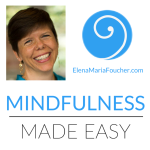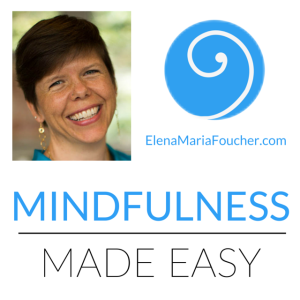(video 49sec) Here is the second body strength exercise that Personal Trainer, Joey Hunter, gave me. She asked me how long can I hold a few simple exercises & what goes through my mind as I do them?
I decided to see what would happen if I did each exercise a second time while practicing mindfulness. Would it change my experience? Would I be able to hold it longer?
Above is the first exercise, a wall squat, done ‘normally’ and while voicing my stream if conscious.
Below is me doing it mindfully! (video 2:04min)
Try this yourself! Put your back against a wall, thighs parallel to the ground and see how long you can hold it. Then do it while practicing mindfulness meditation and see if you can hold it longer.

 (meditation: 21:22 min) You may be familiar with Body Scan meditations from your yoga or relaxation classes. They are an ancient way to relax the body and mind.
(meditation: 21:22 min) You may be familiar with Body Scan meditations from your yoga or relaxation classes. They are an ancient way to relax the body and mind. (meditation: 6:18 min) This practice is also a classic mindfulness practice that is very old. In this practice we focus on what we can see in the space in front of us.
(meditation: 6:18 min) This practice is also a classic mindfulness practice that is very old. In this practice we focus on what we can see in the space in front of us.